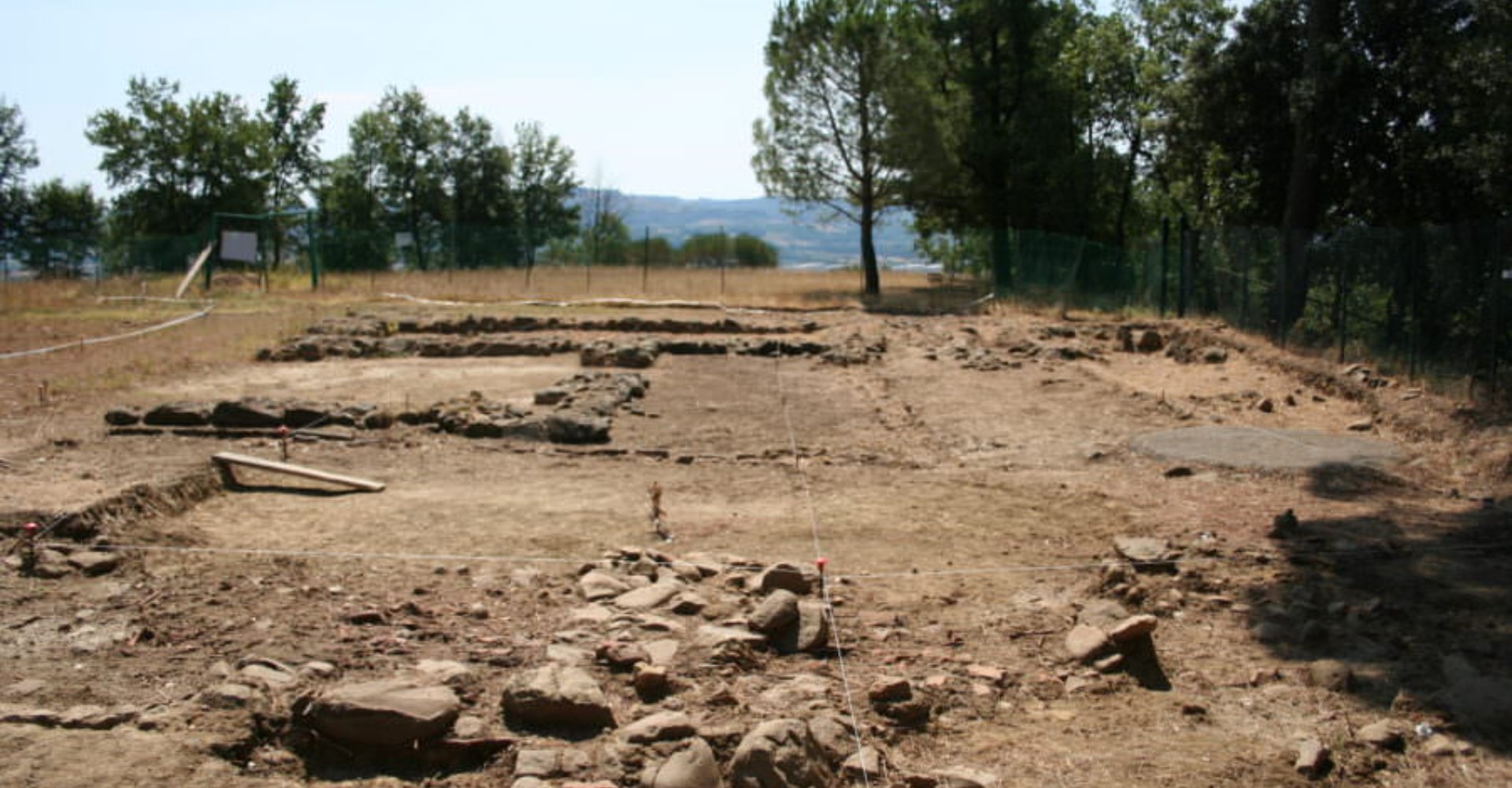A stone’s throw from Limite sull’Arno, perched on the hill of the same name on the slopes of Montalbano, is the Montereggi Archaeological Area, a place that tells centuries of Etruscan history and more. Excavations conducted across several campaigns have unearthed the remains of an ancient settlement, occupied between the 5ᵗʰ and 1ˢᵗ centuries B.C., in a strategic location along the Arno River route, which once connected the hinterland to Pistoia and beyond.
The presence of numerous imported amphorae suggests that a port of call, a point of trade and commercial transit, was located here. The structures found indicate a well-organized settlement. On the slopes of the hill were housing and activities of daily life, while the esplanade at the summit was reserved for worship, probably a temple area, as suggested by the votive artifacts and wall structures discovered on the acropolis.
Prominent among the oldest evidence are ceramic and amphora fragments dating back to the Protovillanovan age (12ᵗʰ–11ᵗʰ centuries B.C.), well before the arrival of the Etruscans. Under Roman rule, around the 1ˢᵗ century B.C., the settlement was abandoned, perhaps partly because of the site’s poor defensibility, but its traces have endured over time, leaving us today with a valuable archaeological heritage.
1986 saw the birth of the Montereggi Archaeological Park, a publicly accessible area where it is possible to stroll among ancient remains and imagine the life that animated the hill centuries ago. Recent research has uncovered impressive sandstone wall structures, with large ashlars and a considerable elevation, suggesting a complex terracing system on the hilltop.
The materials unearthed—pottery, metal objects, spinning tools, domestic containers and painted ceramics—are now on display at the Montelupo Fiorentino Ceramics Museum, providing a tangible insight into the civilization that once inhabited these lands.
Visiting Montereggi means diving into a history spanning thousands of years, suspended between nature, archaeology and memory. An ideal route for those who wish to rediscover Tuscany’s Etruscan roots while exploring an unspoiled landscape that still retains the charm of a distant past.


